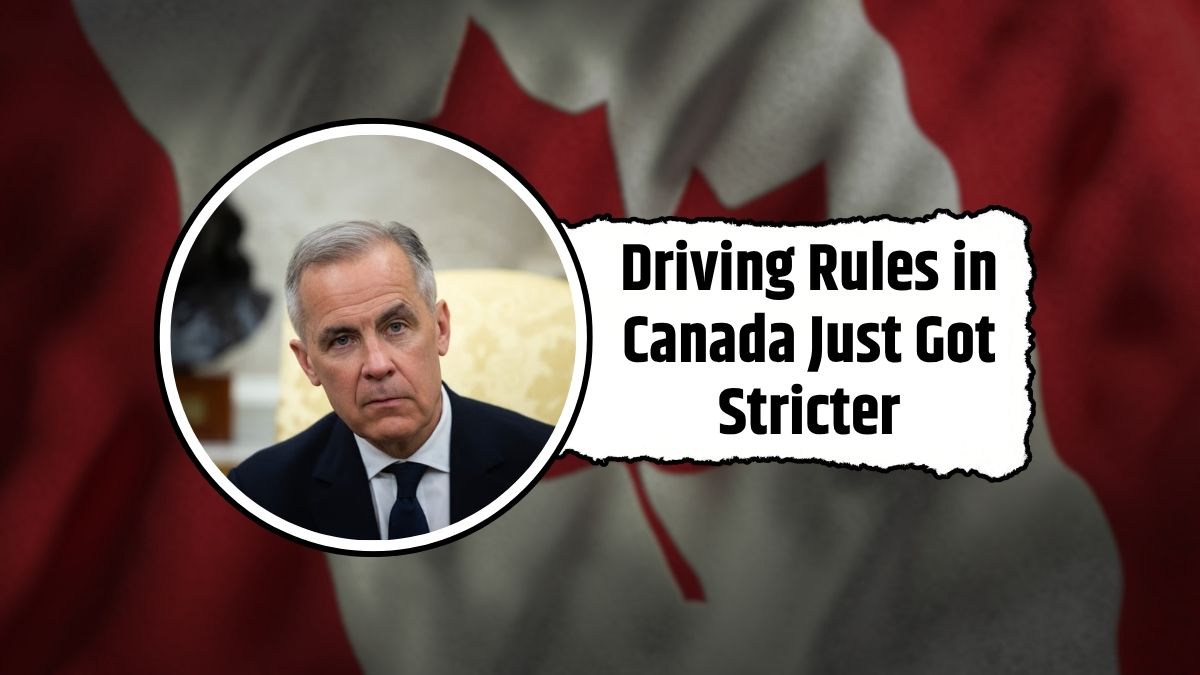Beginning August 1, 2025, Canada has launched a nationwide overhaul of its driving laws, introducing tougher penalties, mandatory dash cam regulations, and a federal zero-tolerance policy aimed at reducing accidents and improving road safety across all provinces.
This bold reform, dubbed the New Driving Law Canada 2025, is part of a coordinated effort between federal and provincial transport authorities to modernize traffic enforcement and standardize penalties from coast to coast.
Major Reforms Rolled Out Nationwide
The 2025 reforms target dangerous behaviors behind the wheel and aim to close enforcement gaps that previously varied between provinces. Here are the most critical updates every Canadian driver needs to be aware of:
- Mobile phone fines have nearly doubled, rising from $615 to $1,000, now with 5 demerit points.
- Zero-tolerance impairment laws now apply nationwide, covering both novice and commercial drivers.
- Dash cams are mandatory for any accident causing over $2,000 in damages.
- Speeding in school and construction zones now comes with steeper fines and mandatory court appearances.
- New demerit penalties now apply to tailgating, unsafe lane changes, and road rage incidents.
These changes reflect an aggressive stance against behaviors linked to traffic deaths, with the government stating that “too many lives are lost due to distraction and recklessness.”
What’s Changed: A Before and After Comparison
To give motorists a clear picture of the shift, here’s how the law compares before and after August 1, 2025:
| Infraction Type | Before August 2025 | After August 2025 |
|---|---|---|
| Mobile Phone Use | $615 fine + 3 points | $1,000 fine + 5 points |
| School Zone Speeding | Max $350 fine | Up to $750 + court date |
| Impaired Driving (Cannabis) | Provincial enforcement | Federal zero-tolerance |
| Dash Cam Requirement | Optional | Mandatory (>$2,000 damages) |
| Aggressive Driving | No specific penalty | 3 points + roadside warning |
This standardization aims to reduce confusion, especially for drivers who frequently cross provincial borders.
Compliance Checklist for Drivers
To stay on the right side of the law, Canadian drivers are being urged to take immediate steps to comply with the new regulations:
- Install a dash cam, especially if driving in urban or high-traffic zones.
- Avoid all handheld mobile use while driving; only use approved hands-free devices.
- Slow down in school zones and construction areas where enforcement cameras have been expanded.
- Minimize distractions, including eating, adjusting music, or using unmounted GPS.
- Update your documents, including license, insurance, and vehicle registration—spot checks have increased.
Repeat violators may also be mandated to attend driving safety programs, regardless of how long they’ve been licensed.
Why the 2025 Law Matters for Road Safety
According to Canadian transportation officials, this reform is more than administrative—it’s a life-saving initiative.
Authorities aim to:
- Cut road fatalities by 12% over the next year.
- Lower distracted driving cases by 25%, particularly in urban provinces like Ontario and British Columbia.
- Use dash cam footage to strengthen traffic violation cases and accident investigations.
- Hold high-risk drivers more accountable, especially commercial, young, and repeat offenders.
This law brings Canada’s road safety framework closer to international best practices seen in countries like Sweden, Germany, and Australia, where similar reforms led to significant drops in fatal crashes.
What Sets This Law Apart
Unlike previous updates that were province-led and inconsistent, the 2025 law stands out for being:
- Nationwide in scope, applying uniformly across provinces.
- Tech-integrated, with dash cam and GPS data now playing a vital role in enforcement.
- Behavior-focused, targeting distraction, aggression, and impaired driving.
With this law, Canada sends a clear message: “Drive safely—or face serious consequences.”
Driving Penalties: No Room for Repeat Offenders
Authorities have confirmed that repeat violators will be escalated through a tiered penalty system. After multiple offenses, drivers may face:
- License suspension
- Increased insurance premiums
- Court-mandated driving courses
- Criminal charges, in extreme or repeated cases
The goal is to prevent dangerous patterns before they escalate into fatal consequences.
Public Reaction and Government Commitment
Public response has been mixed. While many support the tougher stance, some drivers have expressed concern over dash cam costs and higher fines. In response, the federal government is exploring incentives or tax rebates for dash cam purchases in low-income households.
Officials remain firm, stating that “a few hundred dollars in penalties are nothing compared to the cost of a life lost.”
FAQs
Q1. Is dash cam footage now required for all accidents?
No. It is only mandatory for collisions causing more than $2,000 in damages, but having a dash cam is strongly recommended.
Q2. Do the new mobile phone penalties apply to all drivers?
Yes. The increased fines and demerit points apply to every driver, regardless of age or driving experience.
Q3. What happens if I violate the new rules repeatedly?
Repeat offenders could face license suspension, court appearances, and be required to attend government-approved safety courses.







